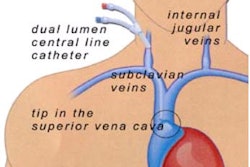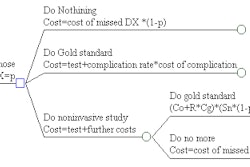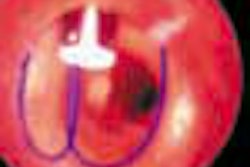SALT LAKE CITY – Interventional radiologists may be sold on the advantages of uterine artery embolization (UAE), but how do patients feel about the procedure, especially a year or more after surgery?
In a poster presentation Friday at the Society of Interventional Radiology (SIR) meeting, Dr. Mark Garcia and colleagues from Christiana Care Health System in Newark, DE, sought to answer that question by tracking the long-term outcomes of women who underwent UAE.
Garcia’s group included 129 patients who had undergone UAE since 1997. The average post-procedure follow-up period was 1.8 years. Thus far in the ongoing study, 101 have been contacted and 81 have agreed to participate. The average age of the survey participants was 45.1 years (range 33-55 years).
"Information regarding indications for UAE, current symptoms, adjuvant medical or surgical therapy, and regularity of menstrual cycle was tabulated," they wrote. According to the results, 71% of the women reported that their primary symptom prior to UAE was bleeding. Sixteen percent reported pain and 13% had other symptoms that made them candidates for the procedure.
In terms of clinical outcomes, the majority of those surveyed said that they had experienced significant improvement (53%) since the UAE surgery. Complete resolution was reported by 39%; 7% said their UAE had not solved the problem; 1% said their condition had worsened.
Most of the women, 57%, reported regular menses post-UAE; 21% reported irregular periods; 22% said their period had stopped after UAE. The most common length between menstrual periods was 22-35 days (51%).
The researchers also asked the women if they were currently taking any medications related to the UAE procedure. Ninety-one percent said they did not require any medication a year later, 4% said they were on pain medication, 1% were put on hormone replacement therapy, and 2% were taking oral progesterone.
Nearly all of the women, 96%, said they did not require further treatment after one session of UAE, while 1% required dilitation and curetage, and 2% needed either hysterectomy or myomectomy.
Finally, the women reported a high level of satisfaction with the UAE procedure. Asked if they would recommend the surgery to a friend, 59% strongly agreed and 34% agreed. Just 7% of the respondents disagreed, strongly disagreed, or were undecided.
"Our study confirms that the early benefits of UAE are still present on long-term follow-up," the authors wrote. "UAE long-term results show 83% of patients had resolution or significant improvement in symptoms with 94.3% of patients requiring no further medical treatment."
Data for the remaining patients is still being collected, they said. The positive feedback from this study dovetailed with research done at Yale University in New Haven, CT that will be presented at SIR on Monday (Abstract No. 234). The Yale group looked at changing trends in gynecologists’ opinions of UAE. Their data will show that patients whose gynecologists were strongly opposed to UAE have no qualms about leaving that doctor and finding another. In addition, compared to 2001, more gynecologists are presenting UAE to their patients as an alternative to hysterectomy.
By Shalmali PalAuntMinnie.com staff writer
March 29, 2003
Related Reading
Cheaper UAE edges out hysterectomy for uterine fibroid treatment, January 17, 2003
Embolization method less costly than surgery for uterine fibroids, December 1, 2002
MRI-guided cryotherapy shows promise as uterine fibroid treatment, July 3, 2002
Copyright © 2003 AuntMinnie.com



















